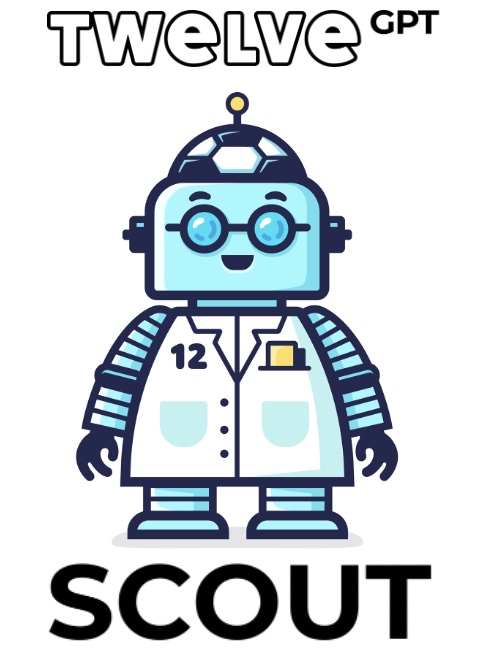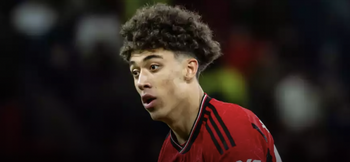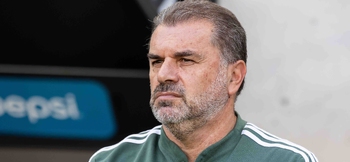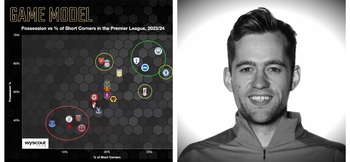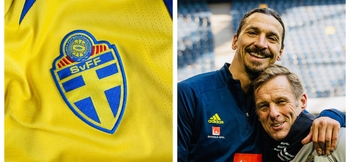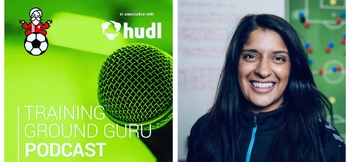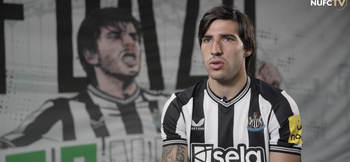Peter Catteeuw: Injury Risk Profiling of players at Royal Antwerp
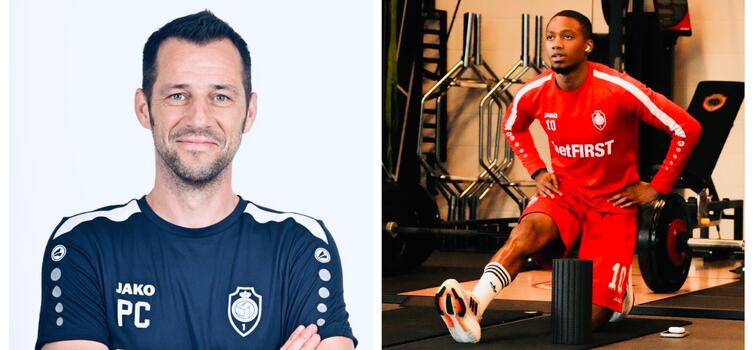
Left: Dr Peter Catteuw; right: Michel-Ange Balikwisha
Written by Simon Austin — March 10, 2024
ROYAL ANTWERP are one of European football’s great transformation stories.
They are Belgium’s oldest club, founded in 1880 and nicknamed ‘The Great Old’, yet had languished in the doldrums before a 2017 takeover by property entrepreneur Paul Gheysens changed their fortunes.
They were soon promoted back to the top flight after an absence of 13 years. Then, on a remarkable final day of the 2022/23 campaign, they were crowned Belgian champions for the first time since 1957 following Toby Alderweireld's 94th-minute equaliser at Genk.
This season, Antwerp have competed in the Champions League group stages for the first time and celebrated a famous win against the mighty Barcelona in front of their raucous home fans at the Bosuilstadion in December.
These successes have been achieved under the guidance of Head Coach Mark van Bommel, the former Barca, AC Milan and Bayern Munich midfielder, and thanks to smart investment and clever recruitment.
Behind the scenes there has been major developments too: building up the Academy, developing the stadium and overhauling the performance and medical department under Dr Peter Catteeuw. He was one of the first big hires of the new regime, lured from rivals Genk in September 2017.

FREE WEBINAR: Dr Peter Catteuw will be delivering in-depth insights into his Injury Risk Profiling process in a free webinar on Monday March 18th at 10am GMT.
To find out more and to register, click the button below.
To say Catteuw inherited a blank canvas would be something of an understatement.
“When I arrived, I was the performance department, because I was the only physical coach in the whole club,” he told TGG. “We didn’t have GPS or heart rate monitors.
"The medical staff didn’t have any records of injuries or treatments. At Genk we had everything, it was all nicely installed, every position was filled with experts, so it was a bit of a shock!”
UPGRADING THE PERFORMANCE DEPARTMENT
Catteeuw soon set about building a new department. He hired physical coaches for the First Team, B Team and Youth Teams, and introduced GPS and heart rate monitoring throughout the club.
One of his biggest priorities was to “instal a culture to gather data”, which is why he introduced the Teamworks AMS (Athlete Management System) Smartabase.
“Smartabase enabled us to gather all of our performance data and to have everything in one place, where you are able to see the training load and medical files,” the Belgian explained.
“The big advantage with Smartabase was that we could tailor how we worked with the data. Everything is adaptable to your own needs, so you make it your own platform.
“It is very flexible, a big hub where you gather your GPS data, game data, medical data; everything comes together there and you can make your own interpretations. You can organise everything yourself, make all the visualisations and calculations yourself.
"Most of the data goes in automatically. We have an API for our GPS, so there is an automatic connection with Smartabase. Heart rate, data from the games is also flowing in automatically.
"The medical staff can add manually the treatments they have with the players. And the players add information from their smartphones, like their completed wellness questionnaires. Everything is coming together and then we make an analysis of all the data, bringing it together in different silos and then combining everything to inform the coaches, on who can train, who can do extra work, who is with the physios.”
Smartabase was acquired by US-based Teamworks in 2023. Antwerp also use Teamworks Hub, an app to streamline communication across teams and departments, which is used by clubs across the globe, including Chelsea, Real Madrid and the Chicago Bulls.
INJURY RISK PROFILING
An area in which Catteeuw and Antwerp have focused a lot of their time and resources is in injury risk profiling. They are doing genuinely groundbreaking work here and Catteeuw will be presenting about it at a free Teamworks Webinar on Monday March 18th at 10am GMT. You can sign up for it HERE.
The first step in the profiling process is gathering a wealth of data and information.
“We are tracking all of the data of the players since 2019,” Catteeuw told TGG. “There are all the tests we do, at the start of the season and then day-to-day, like sleep, wellness, hydration.
“We do weekly testing with counter-movement jumps, hamstring testing, and try to check the neuromuscular fatigue of the players every week. We also have records for every injury for every player, with the full diagnosis of what happened.
"We have a score for every injury. For an anterior cruciate ligament injury, for example, we give a five, the highest score, and over time this should gradually decrease to zero.
“We also track the general maintenance treatment by physios. The players tend to come in daily to the physios, even without an injury, and will do some treatment. Maybe a player comes in every two weeks with a sore hamstring after training, but this is not normal and needs recording and tracking.”
With all this data, Catteeuw and his team are able to build up an Injury Risk Profile for each player.
“From all of this information, we are able to profile the injury risk of all the players, with a probability score for injuries,” Catteeuw said. “Ultimately, we translate this data and information into a traffic light system - red for players who are in treatment, then orange and green.
"Behind this we have a much broader view on all the data, but the traffic light system is very clear and effective for discussions between the coaches and performance and medical staff.
"You need to go into discussion and see what’s best for every player and for your team. Then we are able to take a bespoke approach to each player.
“The idea is to have an individual plan for every one. If necessary, you can adapt the general schedule, if they need to do some additional things or skip part of the training."
CAN YOU ACCURATELY PREDICT INJURIES?
There has been a lot of debate about whether you can actually predict injuries, with more and more time and money being focused on it in elite football.
Catteeuw said: “It is very difficult to predict injuries, but you can have a very good idea of the probability for injuries and maybe a specific type of injury. This is what we are trying to do at Antwerp.
“Zero injuries will never happen in football, but we can do our best to avoid them.”
Another area of conjecture is about whether sports science is placing limitations on performance.
Tony Strudwick famously once told TGG: “One of the biggest issues of our current generation is that sport science, physiotherapy, the medical component, is putting limitations on performance.
"Our job is to create newer athletes - the football athlete of the future, who is robust, resilient and can cope with increases in load. The whole idea of the physical component will be to increase the bandwidth capability of our athletes, mentally and physically, exposing them to different stresses.”
Catteeuw broadly agrees, again with some caveats.
“My first step is always to look at a healthy athlete,” he said. ”We always try to push him as much as possible, to have a robust athlete capable of playing two three games a week and keeping on going. We don’t set any limits and try and push the player, while also being mindful that you can’t keep pushing pushing, pushing, pushing.
“You need to take into account the training load and specific capacities and qualities of the player to avoid the injuries, but if you are really making your players robust I am confident they will have less injuries than if you are scared to push them.”
There are many variables around injury risk, including a change of Head Coach - as Catteeuw has experienced at first hand. During seven years at Antwerp, he has worked with five different Head Coaches.
“As a performance staff you try and have the same methodology, but the new coach is the boss and changes something in your daily work,” he said. “They come in and change the methodology.
"You see the movement of injuries going up and down. There was a recent publication (co-authored by Jan Ekstrand, Wart Van Zoest and Håkan Gauffin last year) where they really showed the change of Manager or Head Coach can have a big influence on injuries.
"With a new training regime and style of play you always have to adapt and that can sometimes lead to injuries. Our injury numbers are going down, but with a new coach they could go up again.”
INCORPORATING MACHINE LEARNING
Catteeuw is taking this Injury Risk Profiling a step further by incorporating machine learning.
Last year he co-authored a paper, along with Jente Wagemans, Arie-Willem de Leeuw and Dirk Vissers from the University of Antwerp, that explored an algorithm-based approach to indicating an increased risk of non-contact lower limb injuries.
The quartet collected neuromuscular data (eccentric hamstring strength, isometric adduction, abduction strength and counter-movement jump) of 77 players at the start of the season (baseline) and then at four, three, two and one weeks prior to injury.
There were 278 cases (92 injuries and 186 healthy) and a ‘subgroup discovery algorithm’ was applied. What the team found was that more injuries occurred when:
- Between-limb abduction imbalance neared or exceeded baseline values three weeks before injury.
- Adduction muscle strength of the right leg remained the same or decreased compared with baseline values one week before injury.
In 50% of the cases, an injury occurred if abduction strength imbalance before injury was more than 97% of the baseline values; and if peak landing force in the left leg was lower than 124% of the baseline four weeks before injury.
Catteeuw says the research provides a proof of concept for an algorithm using neuromuscular tests having potential for injury prevention.
“We saw that something was changing in the run towards an injury, although that is still a long way from really predicting, he said.
ALL TO PLAY FOR
There will be plenty going on for Catteeuw and Antwerp from now until the end of the season. They are through to the Belgian Cup final once again and will face Union Saint-Gilloise in the showpiece on May 9th.

Peter Catteeuw at Antwerp's training ground
They also guaranteed a place in the title play-offs with victory over KV Kortrijk on Saturday (March 9th), although high-flying Union have a strong lead at the top of the table. Catteeuw will also be keeping a keen eye on his former players, including Kevin de Bruyne, with whom he worked at Genk.
“Kevin was only 17, 18 then, but you could see his talent,” Catteeuw said. “Sometimes he would get frustrated in a game or training because his team-mates didn’t always understand the things he did on the pitch.
"As you see now at Manchester City, he sees openings in the defence that other players don’t always understand. You saw he had something special but didn’t believe he could have a career like this.”
Like De Bruyne, Antwerp are on the up as well.








